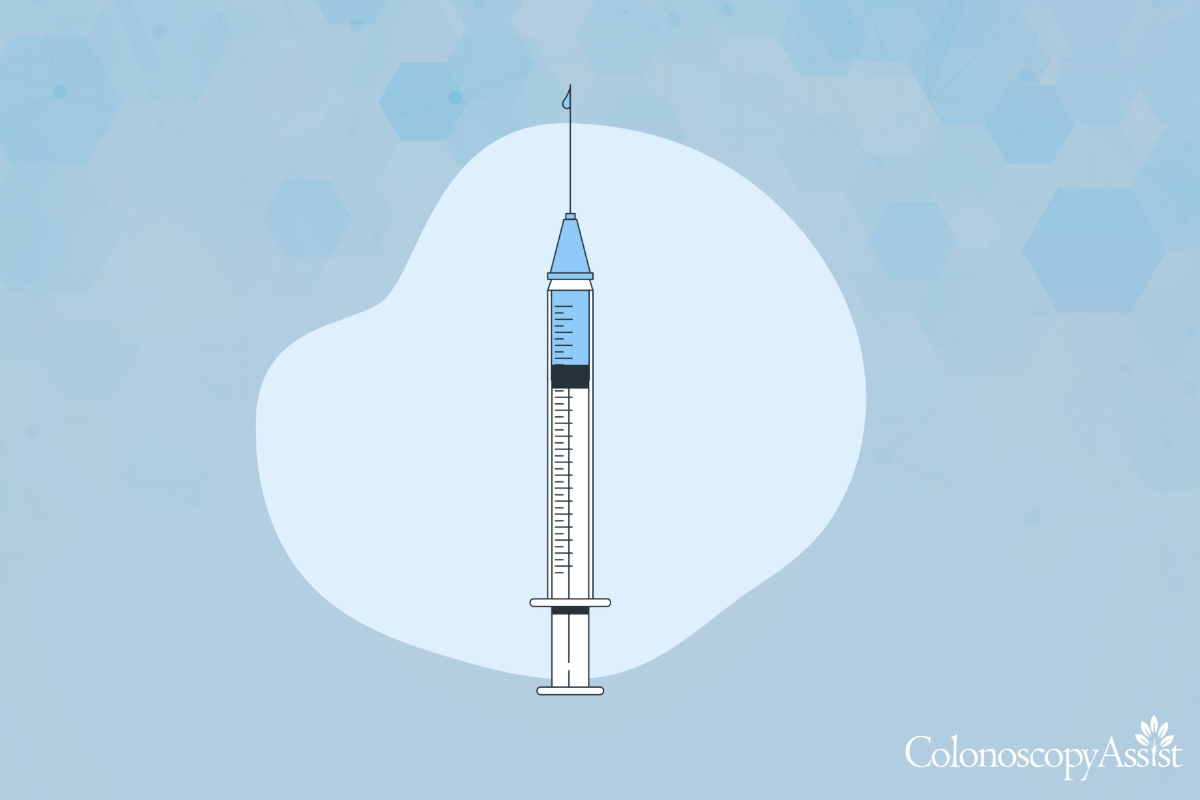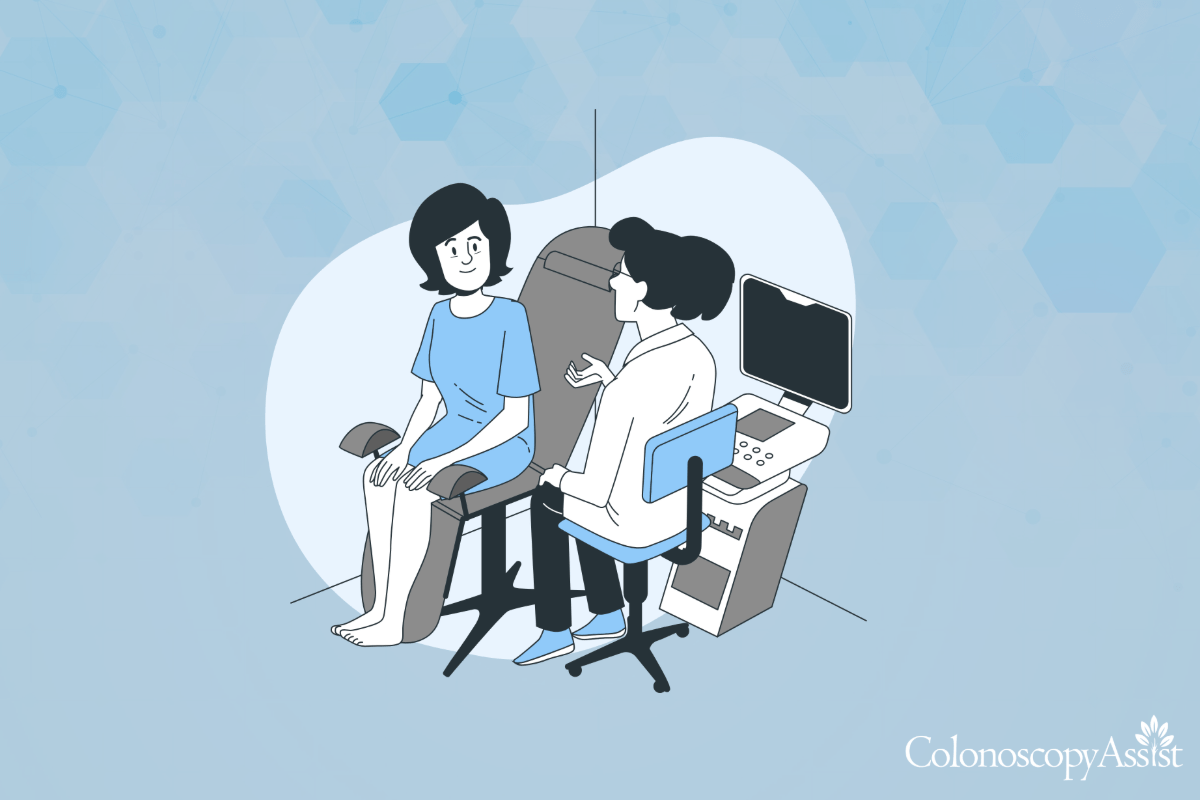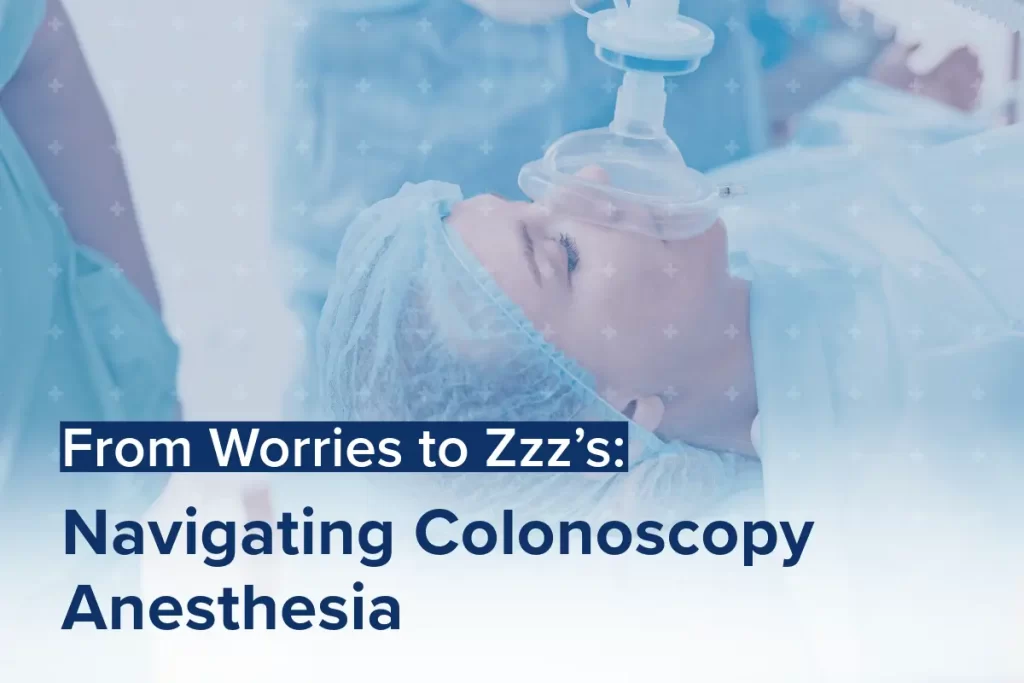Table of Contents
ToggleSchedule Your Procedure Today
- All-Inclusive Service
- Board-Certified Physicians
- Transparent Pricing
Worried about your upcoming colonoscopy because you’re not sure which anesthesia option is best for you? You’re not alone, studies show that many patients feel anxious about the sedation process, with research from the Department of Anaesthesiology, Hospital Cologne Holweide, Teaching Hospital of the University Cologne, noting that nearly 70% of patients share these concerns.
In today’s blog post, we’re breaking down the different anesthesia choices available, from lighter sedation where you stay awake to deeper sedation that lets you sleep through the procedure.
Types of Anesthesia For a Colonoscopy

When you’re preparing for a colonoscopy, you might be wondering, “What kind of anesthesia is used for a colonoscopy?”
In this section, we’ll walk you through the different types of anesthesia available, from no sedation at all to full general anesthesia, so you know what to expect and can choose the option that best fits your needs.
| Type of Anesthesia | Sedation Level | Description |
|---|---|---|
| No Sedation | Awake Colonoscopy | Patient remains fully awake during the procedure, which may result in feeling discomfort as the colonoscope is inserted. |
| Minimal Sedation | Anxiolysis | Uses oral or intravenous medication to reduce anxiety while the patient remains awake and aware; quick recovery, though some discomfort may still be felt. |
| Moderate Sedation | Conscious/Twilight Sedation | The most common option; the patient becomes very drowsy, may even fall asleep, but can be easily awakened. Most patients experience little to no discomfort and often have no memory of the procedure. |
| Deep Sedation | Monitored Anesthesia Care | Induces a sleep-like state while allowing the patient to breathe on their own; an anesthesiologist monitors the patient and administers Propofol for a smooth, comfortable experience. |
| General Anesthesia | Fully Unconscious | The patient is completely unconscious and may require breathing support; typically reserved for high-risk patients or cases where other sedation methods are unsuitable. |
What Is the Right Sedation for Your Colonoscopy Procedure?

Before your colonoscopy, it’s important to talk with your doctor about your sedation options and preferences. Keep in mind that some facilities may only offer a few choices. Here are a few key factors to consider:
Pain Tolerance: Everyone feels pain and discomfort differently. Your personal pain threshold plays an important role in deciding which level of sedation might be best for you during the procedure.
Medical History: Your overall health matters. Pre-existing conditions, like sleep apnea or heart issues, along with your current medications, allergies, and past experiences with sedation can all influence the safest and most effective sedation option for you.
Anxiety: If you tend to feel very anxious, that can affect how you experience pain and how your body reacts to sedation. High anxiety might require a deeper level of sedation to help you relax and stay comfortable throughout the colonoscopy.
Risks & Side Effects of Anesthesia
The most common side effects after a colonoscopy include grogginess or dizziness, with most patients returning to normal within a few hours. The recovery time can vary based on the depth of sedation, the deeper the sedation, the longer it may take to fully recover.
Research shows that roughly 10-30% of patients experience additional side effects such as nausea, vomiting, or a sore throat due to anesthesia. More serious complications, like breathing or heart issues and allergic reactions, affect about 1% of patients.
How Sedation Affects the Cost of a Colonoscopy

The cost of your colonoscopy can vary based on the depth of sedation required. Generally, moderate (or conscious) sedation is included in the base cost.
The typical cost of anesthesia or sedation for a colonoscopy is around $250 or more. However, this figure can differ based on several factors:
- Type of Sedation: General anesthesia tends to be more expensive than lighter sedation options.
- Length of the Procedure: Longer procedures generally result in higher costs.
- Location: Procedures performed in hospitals usually come with higher expenses compared to those done at independent care centers.
- Anesthesiologist Fees: Deeper sedation levels that require the presence and expertise of an anesthesiologist can drive up the overall cost.
As a patient, consider asking:
- “What type of sedation is included in my colonoscopy cost?”
- “Will I need to pay extra for an anesthesiologist?”
- “Does my insurance cover the full cost of the sedation, or will I have out-of-pocket expenses?”
Sleep Easy with Transparent, All-Inclusive Pricing
At ColonoscopyAssist, we understand that choosing the right anesthesia option is a big decision. That’s why we offer flat-rate, all-inclusive pricing, with sedation costs built right in, so you never have to worry about unexpected fees
With over 1,000 locations nationwide, we’re here to make your colonoscopy as comfortable and affordable as possible, turning your worries into zzz’s.
Don’t just take our word for it; here is what our patient Garry H. shared:
“ColonoscopyAssist made everything much simpler. I was quoted a $2500 copay of a colonoscopy by my insurance (BC of California), but I got the same service from the same doctors through ColonoscopyAssist for under $1200 without using insurance at all. No surprise bills for anesthesia or facility charges either. Makes me question the value of a $2k a month health insurance plan.”
Final Thoughts
As you can see, there’s a wide range of anesthesia options for colonoscopies, each with its own cost.
You now have a clear picture, from minimal sedation to general anesthesia. and you understand how factors like your pain tolerance, medical history, and the length of your procedure can influence both your comfort and expense.
Take a moment to review your choices and have a conversation with your doctor about what’s right for you.
FAQ
What is the safest anesthesia for a colonoscopy?
Moderate sedation, often called conscious or twilight sedation, is generally considered the safest option during an endoscopy performed on your colon.
This level of sedation uses a sedative that ensures you remain comfortable and typically have little or no memory of the procedure. A gastroenterologist, sometimes assisted by a nurse anesthetist, tailors the sedative dosage based on your individual factors, including your pain tolerance and overall health.
This approach minimizes risks while still providing enough comfort during the procedure.
How long does colonoscopy anesthesia last?
The sedative used during your colonoscopy usually wears off within a couple of hours after the procedure. For example, with moderate sedation, you might feel drowsy for about 1–2 hours as the sedative fades from your system.
However, the exact duration can depend on factors such as your metabolism, the dosage administered, and any other medications you may have received.
Can a colonoscopy be done without anesthesia?
Yes, it’s possible to have an “awake colonoscopy” without any sedative. During such a procedure, you remain fully aware as the gastroenterologist examines your colon. While this option might appeal to those who want to avoid anesthesia, many patients find that skipping sedation can lead to increased discomfort during the endoscopy.
Typically, most patients opt for at least minimal sedation to help ease any abdominal discomfort and anxiety.
Does Medicare pay for colonoscopy anesthesia?
Yes, Medicare generally covers anesthesia services during a colonoscopy if they are considered medically necessary.
This coverage usually falls under Medicare Part B, though it’s a good idea to check with your provider or Medicare plan to confirm your benefits and any potential out-of-pocket costs.
EXCELLENT rating
Based on 2125 reviewsTrustindex verifies that the original source of the review is Google. I was referred to ColonoscopyAssist through my healthcare sharing ministry. They communicated with me every step of the way and were a lower-cost solution to getting a colonoscopy since my preventative screenings aren't covered. I got mine done through a very reputable endoscopy group and they were wonderful.Trustindex verifies that the original source of the review is Google. The entire process was seamless and the staff was friendly and professional. Overall. I had a wonderful experience at your facility.Trustindex verifies that the original source of the review is Google. After the initial, sign up with ColonscopyAssist, it took about 2-3 weeks to get a call from doctors office and appt was 2 weeks later. Everything went smoothly, the doctor was not personable but was professional. Glad it is done. Now my husband has peace of mind.Trustindex verifies that the original source of the review is Google. Simple and easy with great savings.Trustindex verifies that the original source of the review is Google. ColonoscopyAssist was very helpful, responsive, and made the process happen smoothly, not to mention made the procedure much more affordable.Trustindex verifies that the original source of the review is Google. This was as easy as it could have been! Competent and Professional are words that come to mind. This is a great program. From beginning to end it proceeded without a glitch!Trustindex verifies that the original source of the review is Google. Everything worked well before, during and after procedure. Got lots of information. Only ask to upgrade the guide when people are taking tables and not a liquid prep.Trustindex verifies that the original source of the review is Google. very professional and friendly service, everything was organized and I was advised on all the steps. they made this process simple.


















